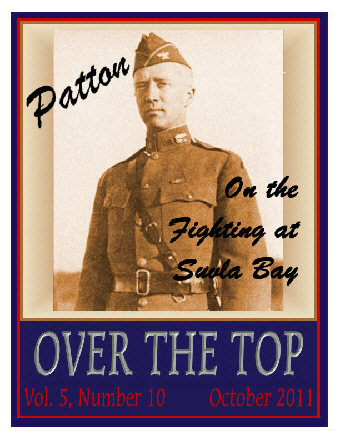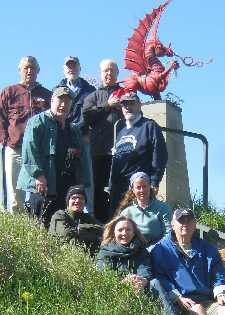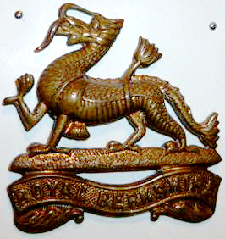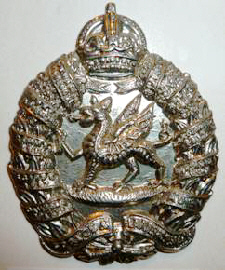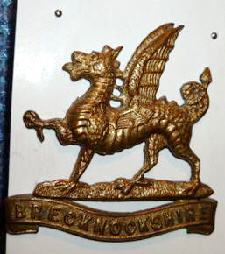

The Great War Society and the WFA-USA are joining
to form the
World War One Historical Association
Visit their new unified website at http://ww1ha.org/
|
TRENCH REPORT: If you missed the announcement last month, the new look masthead and banner headline above tell the whole story about our network of websites. Because of the unification of the Great War Society and WFA-USA into the World War One Historical Association, big changes are afoot for our whole network of websites. All the pages of the now joined two organizations, the Trip-Wire, Trenches on the Web and all our associated sites like The Great War in a Different Light will be accessible at our new site with a unified look and navigational system. For now, they have been gathered under the new URL but stand alone with their old design and directory systems. However all the page are accessible now and will be as we work over the next few months to integrate them. Just click on the new URL in the banner above and set that as a favorite or bookmark. Web addresses here on the Trip-Wire will go directly to the new addresses. . .Call for papers: Women's Organisations and Female Activists in the Aftermath of the First World War: Moving Across Borders, an interdisciplinary, international conference to be held at Hamline University, St. Paul, Minnesota, USA, 26-28 May 2012. Contact Ingrid Sharp. i.e.sharp@leeds.ac.uk for information (email)
MH
This Month's Internet Feature
The Cavalry at War
Accounts of Cavalry Actions
British Cavalry at Cambrai, November 1917
Cavalry Battle of Haelen, 1914
Oscar Kokoschka: Artist and Cavalryman
Training WWI Canadian Cavalrymen
New at Our Own & Our Friends' Great War Websites
Click on Title or Icon to Access
|
Recommended by Friends and Readers
A great survey of war art and poetry at the Weimar Blog:
Art of the First World War
A collection of videos of WWI replica aircraft in action:
Historical Aviation Film Unit
At World War One Historical Association Sites
Full Program New England - New York Chapter Seminar, 12 November 2011
New Reviews Available at Len's Bookshelf
2010 Award Announced
The annual World War One Historical Association - Phi Alpha Theta Undergraduate Essay Prize for 2010 has been won by Chelsea Gibson of North Georgia College & State University for her essay "America and Her Immigrants During World War One". The World War One Historical Association is the newly formed union of the Western Front Association United States Branch and The Great War Society. Phi Alpha Theta is the National History Honor Society. Ms. Gibson receives a check for $1,000 for her winning effort. Click here to download the winning essay in PDF format:
http://ww1ha.org/pdf/america_immigrants.pdf
|
|

François Faber (shown below) was the best-known Luxembourgeois killed in the Great War. As cyclist he won the overall Tour de France in 1909 and was only prevented from winning the next year due to an accident. Over his career he also won a still-standing record of 19 stage victories in the Tour. He enlisted in the French Foreign Legion in August 1914. The story of his death -- disputed by some -- is that on 9 May 15 near Arras he received a telegram saying his wife had given birth to a daughter. Cheering, he is said to have jumped up in the trench and was killed by a German sniper.
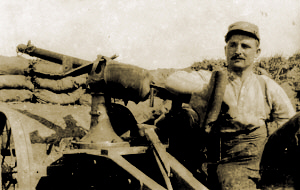
|
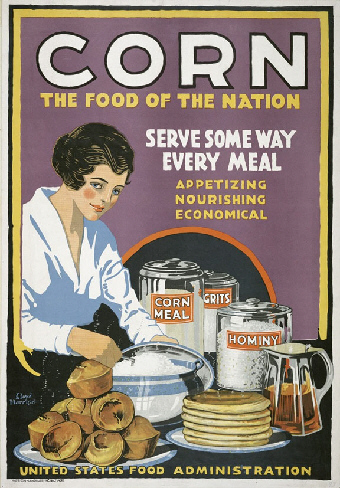
U.S. Food Administration Poster
by Lloyd Harrison, 1918
|
GREAT WAR 2011 EVENT CALENDAR
|
A World War I Event Calendar
Download Word Document Calendar
Here
We have resumed maintaining our WWI Calendar. There is simply more information than we can display here on the Trip-Wire. We count on all of you who schedule WWI events to contact us with new and updated information.
(send an email with schedule information)
|
2011 League of WWI Aviation Historians Seminar
Field of Dreams
14-15 October, 2011
Casa Munras Hotel
Monterey, CA
(Seminar includes field trip to Antique Aero in Paso Robles, CA)
(Speakers and Downloadable Registration Form)
|
Lafayette Escadrille Seminar
Sponsored by the Mid-Atlantic Chapter
League of WWI Aviation Historians.
National Air and Space Museum's
Steven F. Udvar-Hazy Center, Dulles International Airport
10:00am - Saturday - 24 Sept. 2011 (more information)
|
Western Front Association
U.S. Branch Chapter Meetings
Check for Your Region
Regularly Updated (details)
|
Great War Society Monthly Chapter Meetings
Berkeley, San Francisco, and
Palo Alto, CA
Regularly Updated (details)
|
Send additions/corrections for our master schedule:
Email Response
|
Vancouver, B.C., War Memorials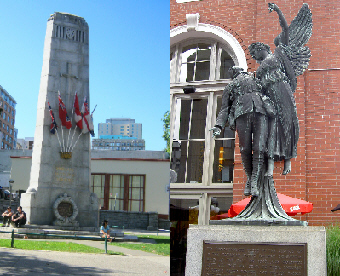
My partner Donna and I spent a week vacationing in beautiful Vancouver, British Columbia this past month. We discovered it has two distinctive major World War I memorials and several smaller monuments in various parks. On the left is the 30-foot Cenotaph at Victory Square honoring Canada's fallen. The dramatic statue on the right is located at the main rail and ferry terminal and honors the employess of the Canadian Pacific Railroad who died in the Great War.

I am here (in the firing line) since yesterday. Battery split up, and I have come as reinforcements. Whizzing, banging and swishing and thudding completely surround me, and I almost jog up and down on my camp bed as though I were riding in a country wagon or a dilapidated taxi. I am in short, my dear colleague, in the midst of an unusually noisy battle.
Percy Wyndham Lewis, letter to Ezra Pound (6 June 1917)
|
|
|
|
Page Two
|
|
|
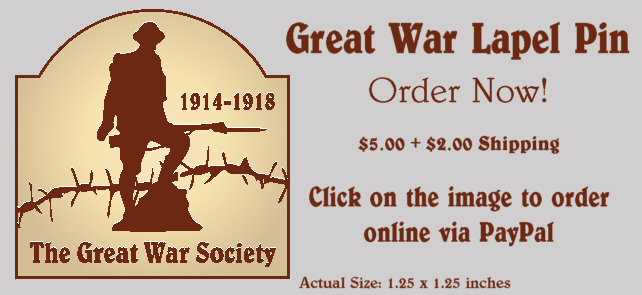 |
Not All Dragons Are Welsh!
|
The photo on the left shows my Spring 2011 Western Front tour group at the famous Welsh Dragon monument overlooking Mametz Wood on the Somme battlefield, where the 38th Welsh Division fought with distinction. Now dragons, of course, are fearsome symbols, but their multiple mythic functions include serving as protector of a nation or group of people, while at the same time embodying their character. This monument at the Somme is so renowned, however, that for the WWI crowd, dragons are exclusively associated with the Welsh. One of our tour members, Jim Patton (second from the left in the green jacket) pointed out that other regiments of the British army recruited far from Wales also lay claim on the beast. Jim is a collector of cap badges from the period and he sent the accompanying photos to me to support his case.
The Royal Berkshires were a line regiment that was originally titled "The Princess Charlotte of Wales' (Berkshire) Regiment". It was created in 1881 by amalgamation of the 49th and 66th Regiments of Foot. Subsequently awarded the "Royal" appellation, it was itself amalgamated in 1959 and its heritage currently belongs with the Rifles. Neither the 49th nor the 66th had a particular relationship to Wales. The 49th had been designated to Princess Charlotte of Wales (1796-1817), the only child of George, Prince of Wales, the Prince Regent, who became George IV in 1820. But, surprise! This isn't a Welsh dragon at all. It's a Chinese dragon, awarded as a battle honor for service during the Opium Wars.
The Buffs (Royal East Kent Regiment) badge shows a Welsh dragon that is different from the Red Dragon at Mametz Wood. It is said to have been taken from the Tudor coat of arms to recognize the royal creation of an antecedent of this regiment in 1572. In 1707 the dragon was officially bestowed upon the regiment as an honor to "reward for its gallant conduct on all occasions". One of the oldest regiments of the line, the Buffs were amalgamated in 1959, and today their heritage is with the Princess of Wales' Royal Regiment. There were also the "Canadian Buffs" in the First World War. Formed in Toronto, the 198th Bn CEF adopted this title and the dragon insignia.
The Monmouthshire Regiment
The badge to the left, with the WWI honors, is the 1st Bn, post-1921. This particular specimen is silvered, which wasn't regular issue. The 1st Bn Monmouthshires became a Royal Artillery unit in 1940. On the right is a 2nd Bn Monmouthshires badge because it's in gilding metal. The 1st Bn also used this style of badge from 1908 until 1914 but in white metal. There are several variants of Monmouthshire Regiment dragon badges. In the period prior to 1908 each battalion had a naming scroll under the dragon (1st, 2nd or 3rd), and in the 19th century there was a 3rd Bn badge that had a slightly different presentation of the dragon.
Our last dragon does have a link with the Welsh dragon, but not to the Western Front. The Brecknockshires were an independent Territorial Battalion until 1914, when they were assigned to the South Wales Borderers. They spent the whole First World War in India, except for a brief posting to Aden. The Borderers and all of their ancillary battalions were amalgamated into the Royal Regiment of Wales (now the Royal Welsh) in 1969.
|
|
World War I Headlines
in the
21st Century
|
|
|
|
Season Ticket, Verona
Contributed by Ted Huscher
[Ed. Note. Aero-historian Ted Huscher, with help from Roberto Gentilli, has discovered the identities of the Hungarian fighter pilot who downed the Caproni bomber in this story, the number and crew members of the bomber, and the location of the incident, Fort Luserna, in Northern Italy.]
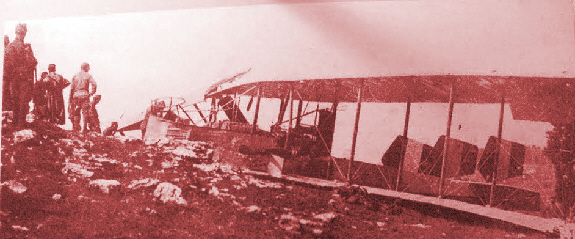
Wreckage of the Caproni Bomber at Millegrobbe Near Fort Luserna
Above us the big Caproni [Ca33 Ca1179] is seriously engaged with our little fighting monoplane [sic]. Our anti-air batteries send heavy charges against the sky without avail. The white smoke-clusters from the detonations spread and evaporate slowly on the sharply brilliant blue.
Our flier [top Hungarian ace Josef Kiss] gets nearer all the time to the clumsily maneuvering biplane, and the frequent cough of their machine guns can be distinctly heard on the earth. All of a sudden the Italian machine settles downward. Our wheels above it for a brief moment, then flies off northward [toward Ciré near Pergine Valsugana] while at ever-increasing rate the Caproni speeds toward the ground, its motor stopped, the wings wavering, and plunges to earth.
By the time I get there [a field near Fort Luserna] the body of the Italian flying captain [Gaetano Coniglio], killed by a machine-gun bullet, is laid out on the turf beside the plane. One wing [starboard] of the gigantic bird of war, bent and broken, has pierced into the earth and oil is filtering out of the riddled [port] motor.
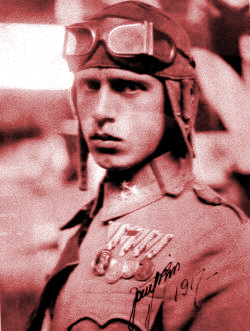
Victor in the Air Action
Hungarian Ace Josef Kiss |
The Italian officer is clad in a full leather suit, his faultless elegance disturbed only by the angle at which his cap is crushed over his clean-shaven face. A fine-worked silver wristwatch ticks on unshaken and the whole body stretched out at ease seems to be only sleeping.
We search his pockets; his portfolio is handed to me. Besides letters, bank notes, slips of paper, there is a double-folded card in a hard black binding: "Season ticket to the circus, Verona."
Here on this barren shell-plowed field the circus is just a printed name on a piece of cardboard. The glittering lamps at the base of the box rows, the grubbed up carpet of the sawdust, the snapping whip of the ringmaster, the bareback rider in her tulle skirt and flashing jewels, and all the other endless delights of youth have been left behind forever by one young life. The other slender rakish officers in the box will wait tonight in vain for this comrade. But the music of the circus band will still blare and the floury-faced clown will turn somersaults with paid good humor on a velvet cover on the sand. And the ladies will flirt from afar, just as if he were there, as he was perhaps even yesterday.
I should like to slide the card back under the bloodstained shirt so that, as in pagan times when everything that served the hero followed him into the tomb, this property of his also should disappear from the face of the earth and there should be at least one place left empty in his memory, in the circus in Verona.
From Hussar's Picture Book: From the Diary of a Hungarian Cavalry Officer in World War I, by Pal Kelemen, p. 172-173, Indiana University, Bloomington, 1972.
Ted Huscher's Further Research
By examining archival sources and references, Ted Huscher has discovered some additional details about this incident, which occurred on 25 August 1916. Caproni Ca33, Ca1179, was based out of Verona, and its commander, Capitano Gaetano Coniglio, who was KIA, was also the commanding officer of Squadriglia 5a. The aircraft was landed adroitly by his copilot, Tenete Guido Sobrero, who survived the crash, along with two other wounded crew members. This was Josef Kiss's second of 19 air victories, four (including Ca1179) of which were captured, making him the #5 ace for the Austro-Hungarian Empire. Ltn. Kurt Fiedler was Kiss's aircraft observer (the officer who rode in the back seat and fired the swivel machine gun) during the capture of Ca1179. Kiss had a forward-firing machine gun mounted on the top wing of his aircraft (a Brandenburg C.I26.29) that day. Kiss's aircraft received 70 bullet holes in the fierce aerial engagement.
As a member of my recent Italian Front of World War I Valor Tour group, Ted was able to make an evening side trip to Pergine Valsugana to visit the villa where the pilots of Fliegerkompanie 24 lived (now a hospital) from its perch overlooking the former location of their airfield (now a superhighway and warehouse/industrial district). From the tour groups vantage points during visits to Fort Belvedere and Fort Verena, Ted strained to see the likely landing place of Ca1179 near Fort Luserna, between the aforementioned forts. Fort Belvedere has a photo of the crashed Ca1179 displayed within its corridors.
|
|
|

| Battle of the Marne Reenactment at Villeroy
|
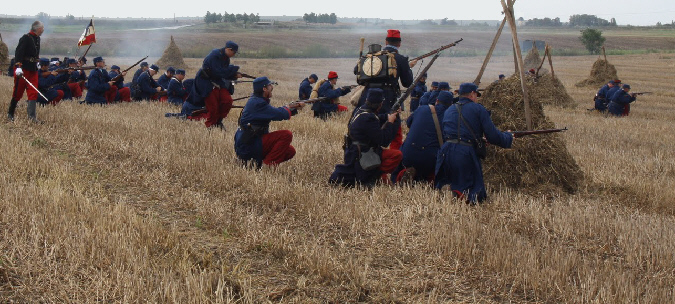
|
| The village of Villeroy northwest of Meaux, France, is the site where the First Battle of the Marne accidentally broke out a day prematurely on 5 September 1914. The local military museum hosts a bienniel reenactment of the action there. Above is a scene from this year's event.
|
|
|
Subscribe to Our Online Magazine
|
|

|
|
|
Page Three
|
|
|
Access to In-Depth Articles
From the International Journal of Naval History,
April 2006,Volume 5 Number 1
|
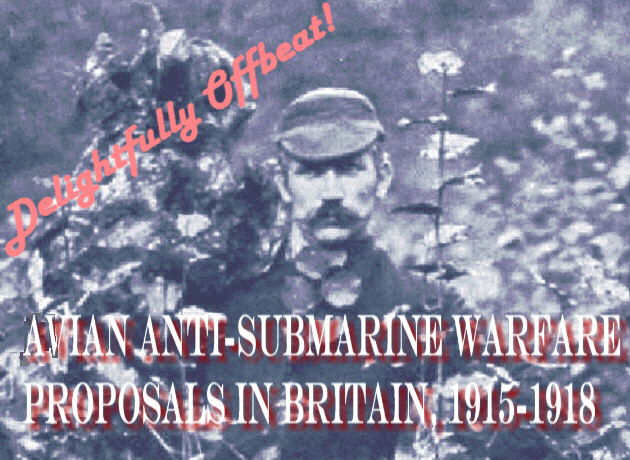
Click on the image to download the full article in PDF format
Be sure you have the latest Adobe Acrobat Reader
|
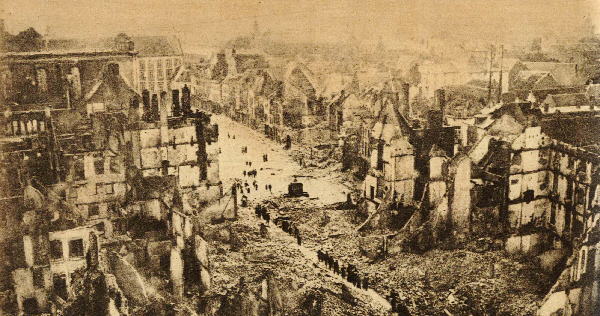
Destruction of Grande Place, Louvain, Belgium
The sack of Louvain was one of the great tragedies of the war and the source of many of the charges of brutality and atrocity by the German Army.
|
|

|
 |
Not Always Anti-War
An Early Work of Siegfried Sassoon, MC
|
Thanks to Finest Hour "The Journal of Winston Churchill," an interesting, and revealing bit of poetry has come to the editor's attention. It shows that prior to his arrival on the Western Front, Siegfried Sassoon, now considered the pre-emininent antiwar poet of the Great War, was of a like mind to, say, Rupert Brooke. Here is what he wrote prior to his actual service at the front:
Because We Are Going
Because we are going from our wonted places
To be task-ridden by one shattering Aim,
And terror hides in all our laughing faces
That had no will to die, no thirst for fame,
Hear our last word. In Hell we seek for Heaven;
The agony of wounds shall make us clean;
And the failures of our sloth shall be forgiven
When Silence holds the songs that might have been,
And what we served remains, superb, unshaken,
England, our June of blossom that shines above
Disastrous War; for whom we have forsaken
Ways that were rich and gleeful and filled with love.
Thus are we heroes; since we might not choose
To live where Honour gave us life to lose.
SIEGFRIED SASSOON, 1915
|
|
|
|











